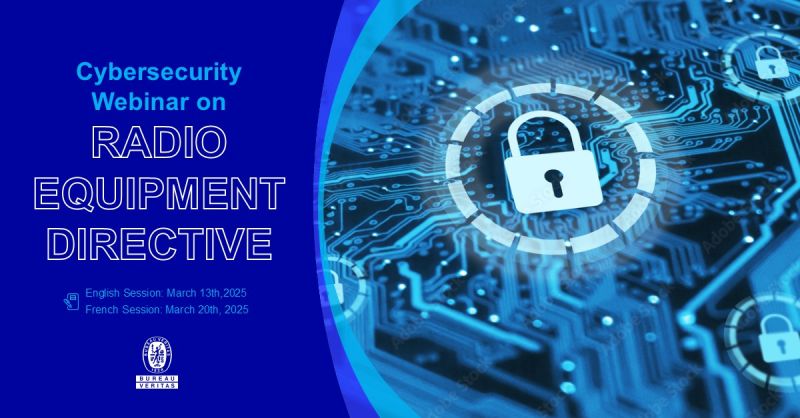Radio Equipment Directive (2014/53/EU)
Number: 2014/53/EU
Official Title: Directive 2014/53/EU of the European Parliament and of the Council of 16 April 2014 on the harmonization of the laws of the Member States relating to the making available on the market of radio equipment and repealing Directive 1999/5/EC
Description: The European Radio Equipment and Telecommunications Terminal Equipment (R&TTE) Directive (1999/5/EC) was published in the Official Journal of the European Communities on 7 April 1999. Member States had until 20th January 2011 to adopt and publish the national laws and regulations transposing the provisions of the new Directive into national law.
Which Products Are Covered By The Radio Equipment Directive (2014/53/EU)?The Directive applies to equipment with an RF broadcasting or receiving function.
The Directive also applies where this equipment:
- incorporates, as an integral part or as an accessory, a medical device within the meaning of Directive 93/42/EEC on medical devices;
- incorporates, as an integral part or as an accessory, an active implantable medical device within the meaning of Directive 90/385/EEC on active implantable medical devices;
- constitutes a component or a separate technical unit of a vehicle, within the meaning of Directive 72/245/EEC relating to radio interference caused by motor vehicles;
- constitutes a component or a separate technical unit of a vehicle, within the meaning of Directive 2002/24/EC relating to the type-approval of two- or three-wheel motor vehicles.

- - Radio equipment: a product, or component thereof, capable of communication by means of the emission and/or reception of radio waves utilizing the spectrum allocated to terrestrial/space radio communication.
- - Apparatus: any radio equipment, telecommunications terminal equipment, or both.
The Directive does not apply to apparatus exclusively used for activities concerning public security, defense, State security, and the activities of the State in the area of criminal law; nor does it apply to:
- radio equipment used by radio amateurs, except when it is commercially available fully assembled;
- equipment covered by Directive 96/98/EC relating to marine equipment;
- wires and cables;
- radio equipment intended to be used solely for the reception of sound and TV broadcasting services;
- products, equipment or components within the meaning of Council Regulation (EEC) No 3922/91 relating to the field of civil aviation;
Manufacturers must determine whether their equipment falls under the Radio Equipment Directive. To be under its scope, the equipment must conform to the essential requirements of Low Voltage Directive as well as the Electromagnetic Compatibility Directive. Also, the equipment must support efficient use of the radio spectrum and resist interference by any other equipment.
If Harmonised Standards for the device exist, the manufacturer may determine the equipment's eligibility independently. Otherwise, an authorized notified body must be involved.
Declaration of Conformity (contents)The basic layout and content of a declaration of conformity are common for all directives but may differ slightly for each directive.
The following are required by most directives:
- Manufacturer's name and address
- The equipment's description and/or serial number
- Reference to relevant harmonized standards
- Reference to the specifications, where necessary, by which conformity is declared
- Details of the signatory
- The two ending digits of the year of CE mark affixation
Directive 2014/53/EU requires the technical file to include the following:
- Description of the radio equipment
- Declaration of conformity
- Restrictions, if any
- List of the harmonised standards, if applicable
- Details about notified bodies, if involved
- Results of design calculations and examinations
- Test reports
When all the necessary steps have been taken, it is time to get the product affixed with the CE mark. The mark should be placed either on the equipment, the packaging, or the instructions. The letters must be vertically equal in dimensions and must not be smaller than 5 millimeters. If there are other Directives that cover the product as well, the CE marking must be affixed only when all the Directives have been met.
Do you need help with CE marking according to the Radio Equipment Directive?Are you making available radio equipment or any other products covered by Directive 2014/53/EU in the EU market? In that case, your product may need to comply with the CE rules. Hopefully, this article has provided you with the guidance to get started.
We understand that the requirements can be complex. The process is daunting and rather intimidating, considering that all your efforts may be in vain if you don't get it right. We will be happy to help. We offer consult and coaching solutions and can tailor our services to your specific needs.
Get Started Now
Reach out to us by phone, or simply fill out the form at dymerindia.com to ensure we have the information we need to provide you with a fitting offer. Our team looks forward to assisting you.
